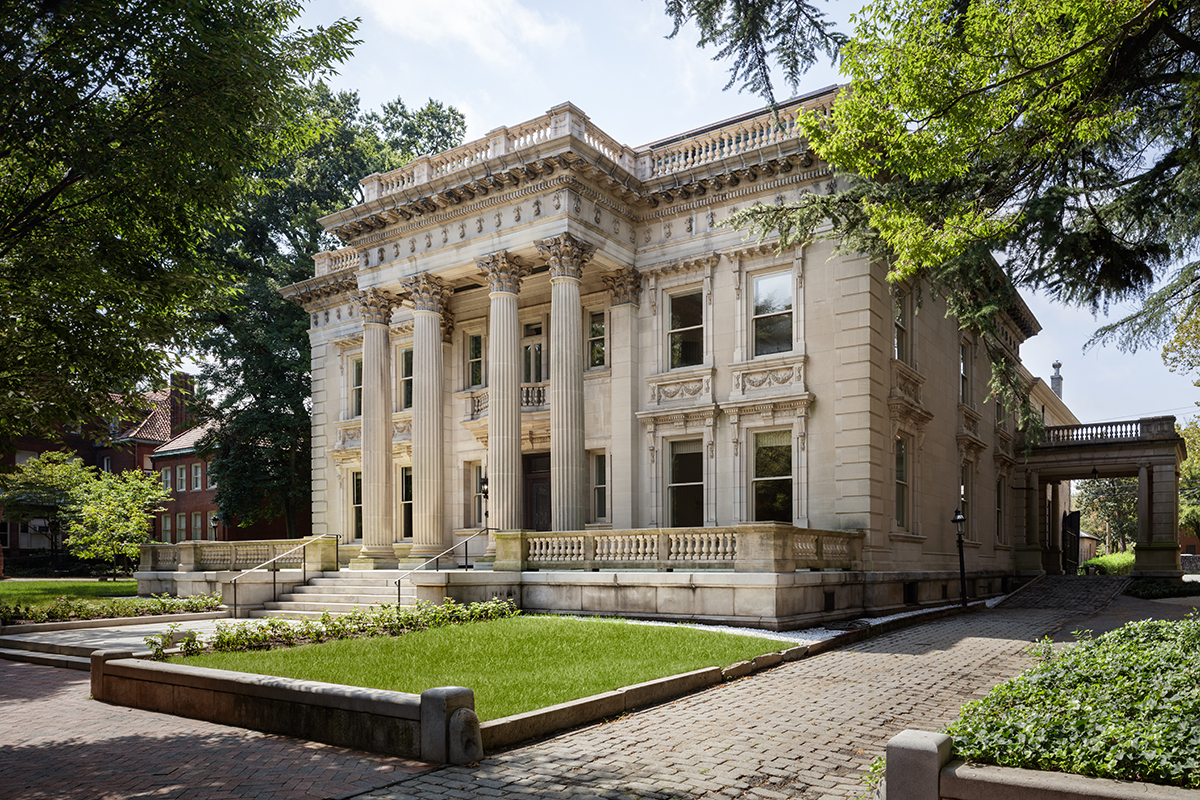
The Scott House, completed in 1911 and more than 18,000 square-feet, was designed by Richmond architecture firm Noland and Baskervill. One of the grandest residences of its day, it was built for Frederic William Scott and Elizabeth Strother Scott in a Beaux Arts style. The design references Newport’s Marble House, which in turn looks to the Petit Trianon at Versailles. The exterior is Tennessee limestone and terra cotta on the first and second floors, with a copper-clad, recessed third floor, as well as a copper-clad conservatory on the first floor. A rear service wing is made of buff brick. According to the National Register, its interior “can be understood as an architectural museum, with rooms in many different styles.”
The house stayed in the Scott family through Elisabeth Scott Bocock. She remodeled the service wing in 1951 and lived in an apartment while renting rooms to students. Virginia Commonwealth University acquired the property in 2001 for offices. It was featured as the Richmond Symphony Designer House in 2002 and was renovated again in 2003–2004 to add code-compliant updates.
In 2015, VCU hired Glavé & Holmes Architecture to complete a Condition Assessment and Feasibility Study which led to a 2017 rehabilitation to preserve and restore existing historic fabric, provide necessary maintenance to make the building watertight, and to update building systems, restrooms, and lighting. Completed in 2020, the Scott House now provides contemporary meeting rooms in an environment that highlights the carefully-preserved historic character of the house. All work was done in accordance with the Secretary of the Interior’s Standards for Rehabilitation with coordination from the Virginia Department of Historic Resources.
Incorporating Contemporary Uses in Historic Spaces
Challenges of the latest transformation of the Scott House included undoing previous non-historic alterations and restoring original elements. Programmatically, the goal was to incorporate contemporary meeting and classroom spaces along with necessary support functions, such as breakrooms and bathrooms, while reducing the intensity of use of the first-floor ornate rooms. Preserving the character-defining historic interior finishes and spaces throughout the house — such as stained glass, ornamental plaster, original light fixtures, and Grueby terrace tiles — was also a priority.
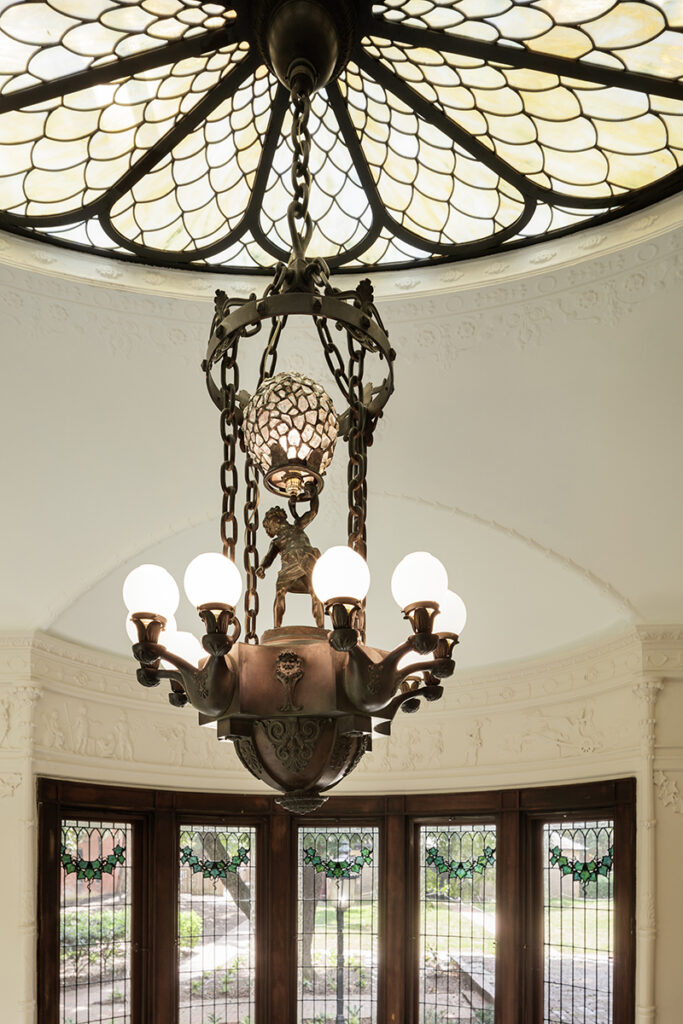
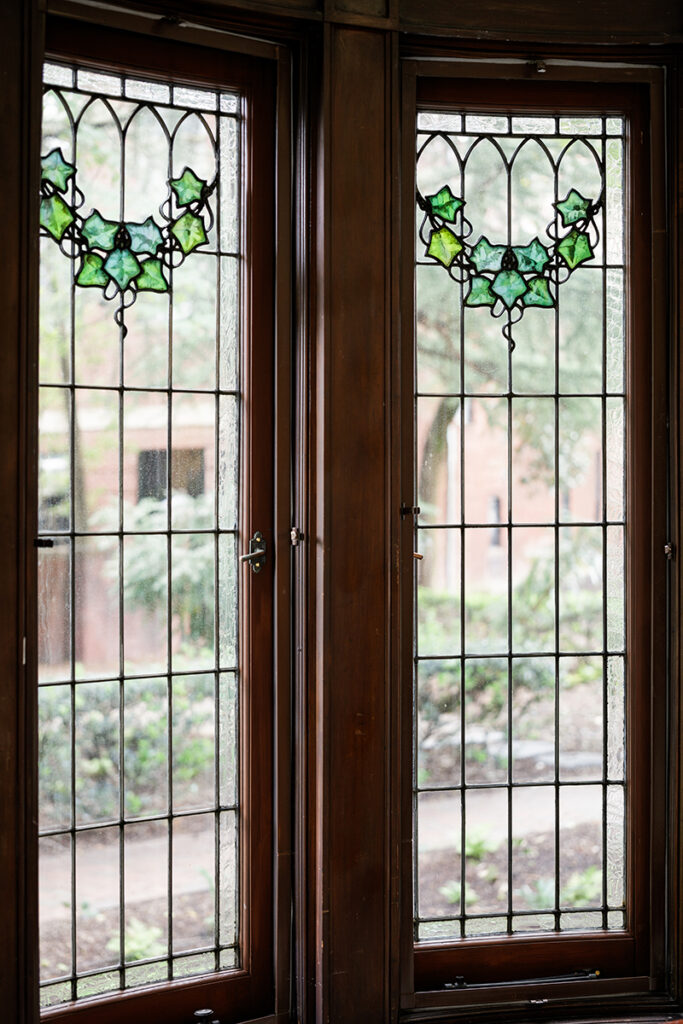
Starting with a fundamental restoration of damaged and missing historic elements, contemporary lighting was introduced to differentiate from the original lighting and, most importantly, rolling white boards and projection technology was used instead of penetrating walls for new technology. New restrooms and a breakroom were carefully inserted in previously altered areas, the modern kitchen was restored to its historic pantry arrangement, the third floor children’s playroom was opened back up to its original footprint and — for the first time since the 1950s — the original elevator is operational using its original buttons.
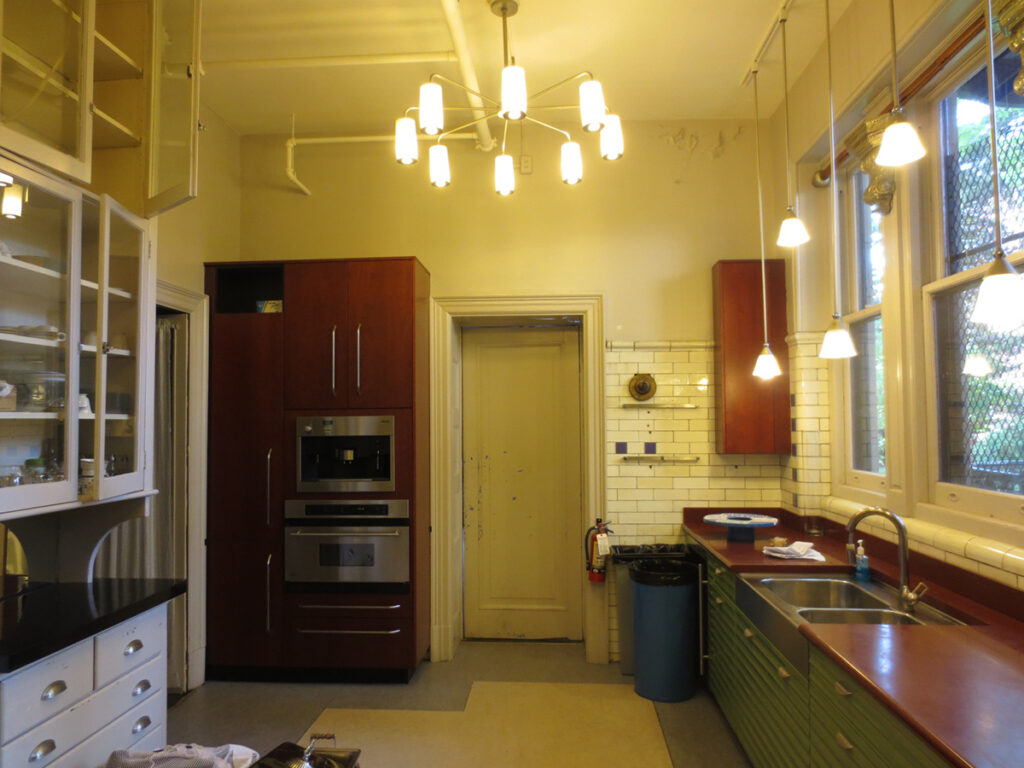

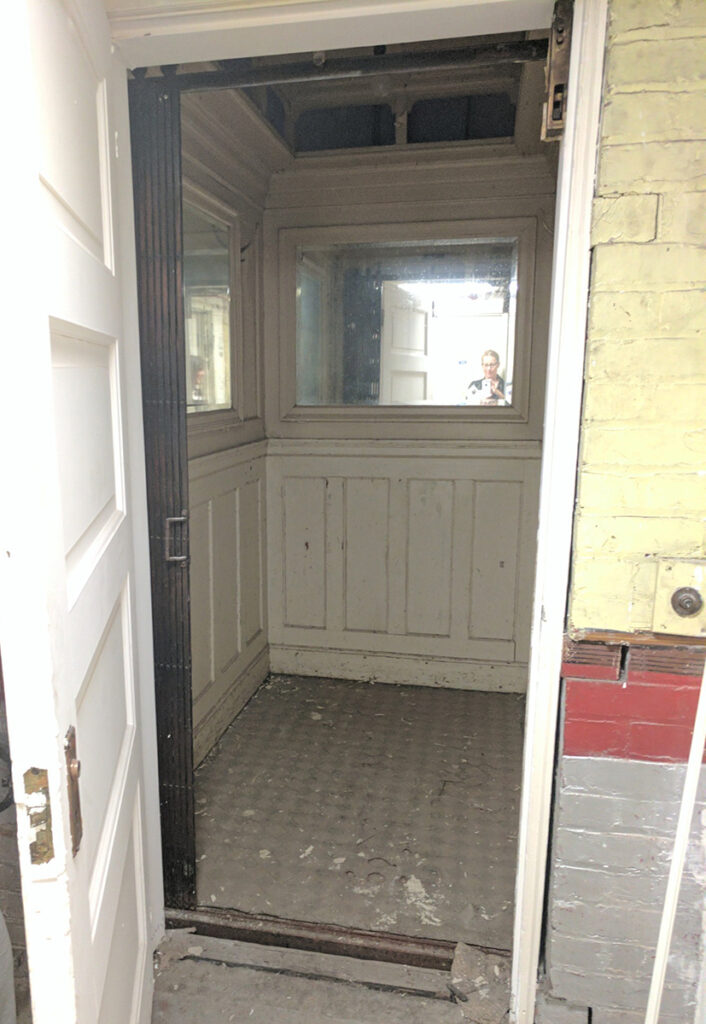
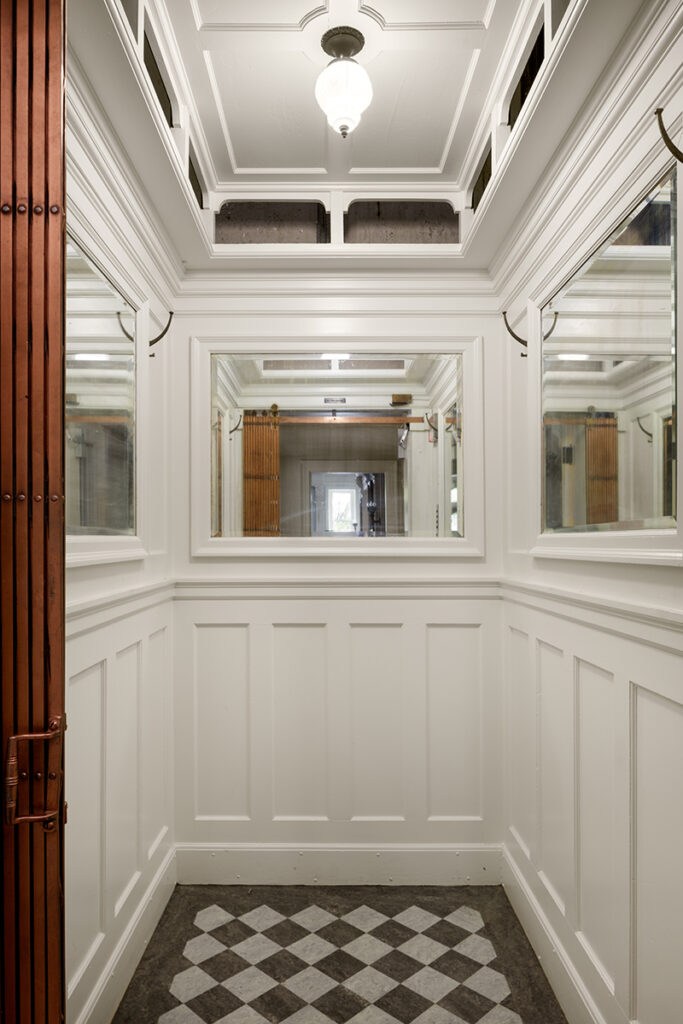
Upgrading HVAC Systems in a Historically Sensitive Setting
Another significant goal was to upgrade the HVAC system while protecting the highly ornamental interior finishes. Central air conditioning was not present — window air conditioning units were still in use and heat was provided by the original radiators. A new multi-zoned VRF system was selected to provide improved heating and cooling to the building.
To minimize the impact of ductwork, the first floor was serviced directly from the basement, the third floor was serviced from the attic, and the second floor utilized closets, service areas and the former dumbwaiter as a chase. Existing grilles were reused wherever possible to avoid further penetrations into historic materials. New second-floor grilles were inserted into flat plaster on side walls. With the installation of the HVAC system, the window units were finally eliminated.
Making the Building Envelope Watertight
With magnificent interiors, the most crucial objective of the project was to make the exterior envelope watertight. The roofs were failing, the conservatory skylight was leaking, and terra cotta elements were fracturing and falling — losing the battle against water infiltration. Falling modillions had also necessitated roping off the unoccupied building for safety. This was not only subjecting interior ornamental finishes to water damage but was secretly damaging structural elements.
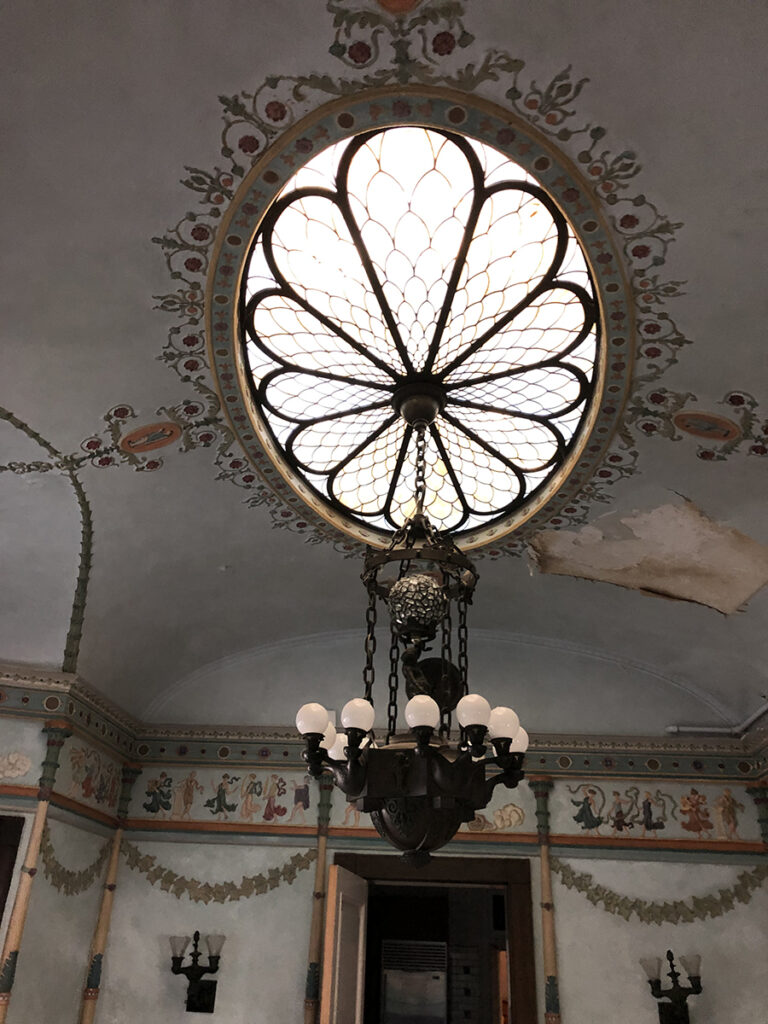
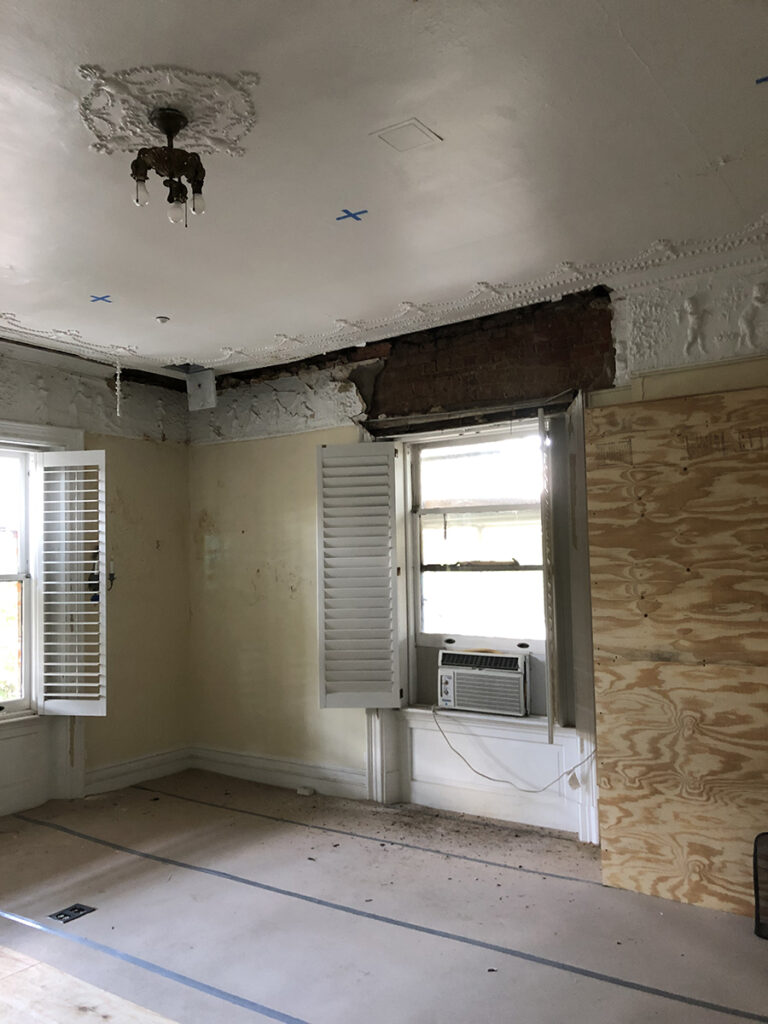
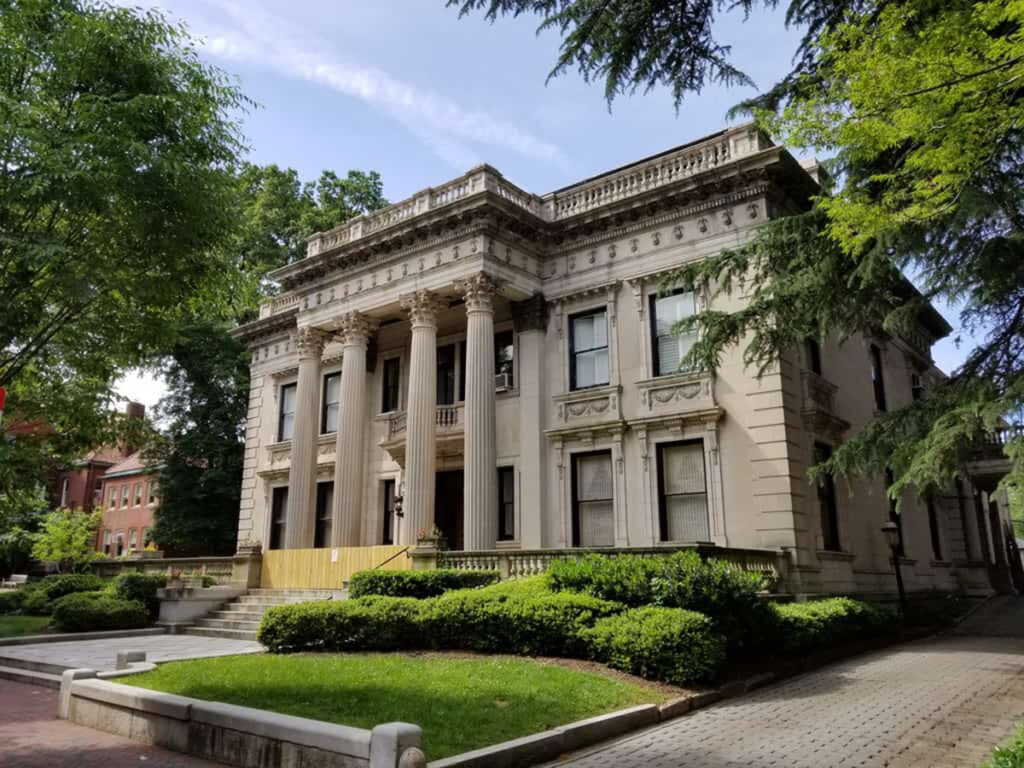
The building envelope was made watertight by replacing copper and EPDM roofing, repairing the copper conservatory skylight, and selectively repairing copper cladding, limestone walls, and terra cotta cornice elements. Each of these materials required specialized treatment with appropriate materials and techniques. In addition, a fundamental flaw in the original roof design of the setback third floor was discovered during the examination of the source of the second-floor plaster cornice damage. Due to a lack of through wall flashing and a reliance on built-in gutters, water was infiltrating the perimeter of the second floor along the north, northwest and northeast sides of the house. About 70% of ceiling joists needed to be sistered in place by the structural engineer to prevent further settlement and damage. This exploration during pre-construction was a crucial early discovery to help prioritize the project’s strict budget. To remedy the issue, in addition to reroofing and opening downspouts, the entire terra cotta roof balustrade was disassembled, through flashing was installed and then reassembled. Broken and inappropriate concrete balusters were replaced with custom reproductions. Original balusters were used on the front of the building and replacements were used toward the rear.
Through all the transformations over the years, from grand private residence, to apartments, to offices and meeting rooms, the life-size portraits of Mr. and Mrs. Scott still hang over the grand staircase watching their home 110 years later.
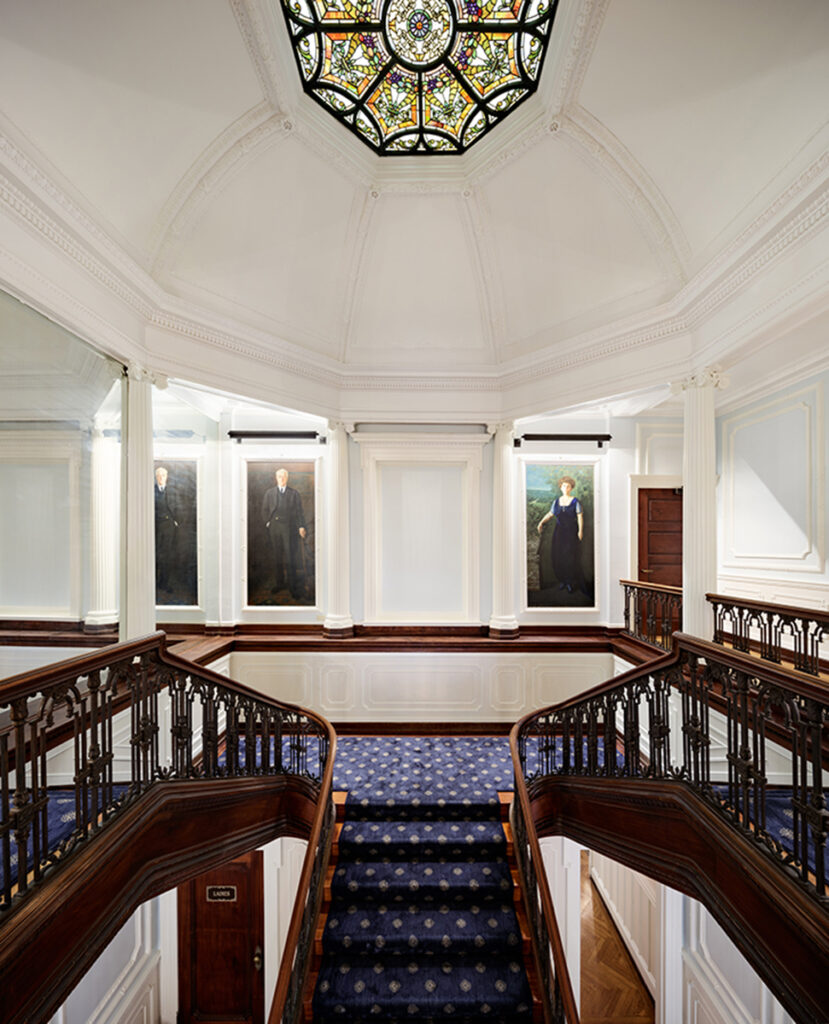
About the Project
Owner
Virginia Commonwealth University
Keith Van Inwegen, Assistant Director of Planning and Design
Architect
Glavé & Holmes Architecture
Lori Garrett, FAIA, Principal-In-Charge
Susan Reed, AIA, Project Manager and Preservation Advisor
Robert Riddle, AIA, Project Architect
Jessica Ritter, CID, Interior Design
Contractor
Kjellstrom and Lee Inc.
Rick Berry, VP of Operations
Photo Credit: Virginia Hamrick Photography
Replacement Terra Cotta – Boston Valley Terra Cotta
Ornamental Plaster – F. Richard Wilton
Stained Glass Conservator – Wayne Cain of Cain Architectural Art Glass
Historic Lighting Repair – Ken Roeper of Crystal Details
Historic Sconce Reproduction Finial – William Ivey
Terrace Tile – Charlie Ponticello of Bello Fattore Architectural Details
Research Credits: National Register Nomination, original drawings, VCU records
